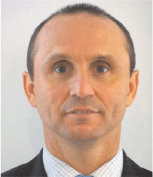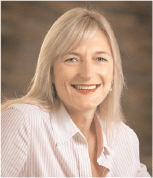Delivering healthcare in remote locations—telemedicine can save lives
H. Black A and L. Heywood ACustomer Care Pty Ltd.
The APPEA Journal 52(2) 707-707 https://doi.org/10.1071/AJ11121
Published: 2012
Abstract
Topside support has traditionally been based on conversations by phone. With increasing access to greater bandwidth at site, a number of other telemedicine tools—from transmission of data (store and forward) to synchronous transmissions (video conferencing)—can be used. For remote sites, this implies that the level of care can be improved, making decisions about therapy and evacuation more accurate.
It is also possible that onsite staffing and equipment can be altered as a result of telemedicine. The cost advantages of using telemedicine at site could be significant. Customer Care™ is the sole support centre for the tempus IC unit in the Southern Hemisphere.
There are also other monitors with simple internet connectivity and common software such as Skype that can be used as telemedicine tools; however, what are the issues regarding security and privacy of transmitted information?
The other advantage of telemedicine is that data can be stored for incident review and feedback. The issue of who has the duty of care is best managed by having a good working relationship between assistance provider and onsite clinical staff. This extended abstract presents relevant case studies and an overview of tools in use. Comments about the possible errors when using telemedicine are also provided.

Hamish Black graduated with a medical degree from The University of Adelaide in 1991. He then trained in general practice in Adelaide, the UK, and Broken Hill where he worked for the Royal Flying Doctor Service as well as running his own practice and managing a hospital emergency department and medical service. In 2002–3, he completed a full-time MBA from AGSM. Since then, he has managed the emergency department at Dubbo Base Hospital and spent four years as medical director for International SOS for the region Australia, New Zealand, and the Pacific. He was also medical director for NSW/ACT for the Australian Red Cross Blood Service. He has extensive experience in emergency medicine and health care management, has travelled widely, and has managed hundreds of short- and long-haul clinical evacuations and repatriations. |

Louise graduated with a BA in business studies (marketing) from Oxford University before moving to Australia in 1985. After several years in the advertising and sales-promotion industry, she joined Access 24 as sales and marketing manager. She was instrumental in the rapid growth of the emergency assistance business in Australia and New Zealand and also fulfilled consultancy assignments in Singapore and Canada before moving to establish the UK subsidiary as general manager. She left Teletech in 2000 to establish her own business in workplace health promotion. On selling this business, she was the business manager of a leading event management company before returning to Customer Care. She completed an MBA in 2001. |


